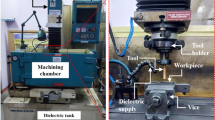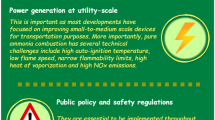Abstract
Soot generators are able to produce carbonaceous nanoparticles purposefully and can therefore play a vital role in the calibration of particle instruments with an actual combustion aerosol. Condensation particle counters (CPCs) have become the instrument of choice for legislative measurements of the particle number (PN) concentration. The Euro 5B standard introduced by the European Union in 2011 was the first regulation that introduced a PN limit for the exhaust emission from light duty diesel vehicles. Since then, several other PN regulations for soot-emitting vehicles and combustion engines have been introduced or are currently in draft stages, all with similar requirements for the periodic calibration of the particle counter’s measurement accuracy. It is for this reason that combustion particles produced under laboratory conditions have become an attractive choice of calibration aerosol. Nonetheless, it is often difficult to generate a large amount of particles in the small nanometer range from a laboratory combustion source. In this study, we evaluated the performance of a recently introduced soot generator and its suitability for calibrating the counting efficiency and lower cut-off size of CPCs in the nanometer size range. We first characterized the soot generator’s warm up time to determine when it reaches a stable output when using propane as its fuel. We then investigated the influence of a dozen propane-to-air flow settings on the resulting particle size distribution of the combustion aerosol. Finally, we determined the resulting nanoparticle concentrations for 13 size classes below 20 nm in order to achieve a high size resolution at or near the lower detection limit of common CPCs. We performed our measurements under low-pressure conditions as our group operates CPCs onboard commercial passenger aircraft that are used as an atmospheric measurement platform. Another consideration is that CPCs are also operated elsewhere at much less than standard sea-level pressure. Examples include high-altitude research stations as well as engine test rigs used for vehicle exhaust emission testing or certification operated at elevated locations, e.g., in the USA, Mexico, and China. From these experiments, we concluded that when operating this novel soot generator with 7.5 SLPM airflow and 62.5 SCPM propane flow, it is possible to generate a realistic combustion aerosol for tests and calibrations that is still adequate even in the small nanometer size range. The concentrations measured under these operating conditions were just sufficient for detection with an aerosol electrometer, which is the concentration reference typically used in CPC calibrations.







Similar content being viewed by others
References
Petzold, A., Ogren, J.A., Fiebig, M., Laj, P., Li, S.-M., Baltensperger, U., Holzer-Popp, T., Kinne, S., Pappalardo, G., Sugimoto, N., Wehrli, C., Wiedensohler, A., Zhang, X.-Y.: Recommendations for reporting “black carbon” measurements. Atmos. Chem. Phys. 13, 8365–8379 (2013). https://doi.org/10.5194/acp-13-8365-2013
Kim, J., Bauer, H., Dobovičnik, T., Hitzenberger, R., Lottin, D.: Ferry, D. and A. Petzold. Assessing optical properties and refractive index of combustion aerosol particles through combined experimental and modeling studies. Aerosol Sci. Technol. 49, 340–350 (2015). https://doi.org/10.1080/02786826.2015.1020996
Meuller, B.O., Messing, M.E., Engberg, D.L.J., Jansson, A.M., Johansson, L.I.M., Norlén, S.M., Tureson, N., Deppert, K.: Review of spark discharge generators for production of nanoparticle aerosols. Aerosol Sci. Technol. 46(11), 1256–1270 (2012). https://doi.org/10.1080/02786826.2012.705448
Jing, L. Standard combustion aerosol generator (SCAG) for calibration purposes, 3rd ETH Nanoparticles Conference, 9-10 August 1999, available at: www.nanoparticles.ch/conference_bibliography.html, Accessed January 4, 2019.
Durdina, L., Lobo, P., Trueblood, M.B., Black, E.A., Achterberg, S., Hagen, D.E., Brem, B.T., Wang, J.: Response of real-time black carbon mass instruments to mini-CAST soot. Aerosol Sci. Technol. 50(9), 906–918 (2016). https://doi.org/10.1080/02786826.2016.1204423
Ess, M.N., Vasilatou, K.: Characterization of a new miniCAST with diffusion flame and premixed flame options: generation of particles with high EC content in the size range 30 nm to 200 nm. Aerosol Sci. Technol. 53(1), 29–44 (2019). https://doi.org/10.1080/02786826.2018.1536818
Jing, L. Neuer Rußgenerator für Verbrennungsrußteilchen zur Kalibrierung von Partikelmessgeräten, OFMET Info, Vol. 7, No. 2 (2000).
Moore, R.H., Ziemba, L.D., Dutcher, D., Beyersdorf, A.J., Chan, K., Crumeyrolle, S., Raymond, T.M., Thornhill, K.L., Winstead, E.L., Anderson, B.E.: mapping the operation of the miniature combustion aerosol standard (Mini-CAST) soot generator. Aerosol Sci. Technol.48(5), 467–479 (2014). https://doi.org/10.1080/02786826.2014.890694
Argonaut Scientific Corp. Miniature Inverted Soot Generator. Accessed February 21, 2019. www.argonautscientific.com/products
Kazemimanesh, M., K. Chen, J. Titosky, and J. S. Olfert. A novel miniature inverted burner for a steady generation of soot nanoparticles. In 36thAnnual American Association for Aerosol Research Conference, Raleigh, USA, Oct 16-20, 2017.
Kazemimanesh, M., Moallemi, A., Thomson, K., Smallwood, G., Lobo, P., Olfert, J.S.: A novel miniature inverted-flame burner for the generation of soot nanoparticles. Aerosol Sci. Technol. (2018). https://doi.org/10.1080/02786826.2018.1556774
Moallemi, A., Kazemimanesh, M., Corbin, J. C., Olfert, J. S., Lobo, P., and G. Smallwood. Characterization of black carbon particles generated by a novel miniature inverted flame burner. In Proceedings of Combustion Institute - Canadian Section, Spring Technical Meeting, Toronto, Canada, May 14-17, 2018.
Moallemi, A., Kazemimanesh, M., Corbin, J.C., Thomson, K., Smallwood, G., Olfert, J.S., Lobo, P.: Characterization of black carbon particles generated by a propane-fueled miniature inverted soot generator. J. Aerosol Sci. (2019). https://doi.org/10.1016/j.jaerosci.2019.05.004
Bischof, O.F.: Recent developments in the measurement of low particulate emissions from mobile sources: a review of particle number legislations. Emission Control Sci Technol. 1(2), 203–212 (2015). https://doi.org/10.1007/s40825-015-0016-9
UNECE, Regulation No. 83. E/ECE/324/Rev.1/Add.82/Rev.4 (2012)
Stipe, C.B., Higgins, B.S., Lucas, D., Koshland, C.P., Sawyer, R.F.: Inverted co-flow diffusion flame for producing soot. Rev. Sci. Instrum. 76, 023908 (2005). https://doi.org/10.1063/1.1851492
Shaddix, C.R., Smyth, K.C.: Laser-induced incandescence measurements of soot production in steady and flickering methane, propane, and ethylene diffusion flames. Combustion and Flame. 107(4), 418–452 (1996). https://doi.org/10.1016/S0010-2180(96)00107-1
Petzold, A., Thouret, V., Gerbig, C., Zahn, A., Brenninkmeijer, C.A.M., Gallagher, M., Hermann, M., Pontaud, M., Ziereis, H., Boulanger, D., Marshall, J., Nédélec, P., Smit, H.G.J., Frieß, U., Flaud, J.-M., Wahner, A., Cammas, J.-P., Volz-Thomas, A., IAGOS-Team: Global-scale atmosphere monitoring by in-service aircraft – current achievements and future prospects of the european research infrastructure IAGOS. Tellus Ser. B-Chem. Phys. Meteorol. 67(28452), (2015)
Bundke, U., Berg, M., Houben, N., Ibrahim, A., Fiebig, M., Tettich, F., Klaus, C., Franke, H., Petzold, A.: The IAGOS-CORE aerosol package: instrument design, operation and performance for continuous measurement aboard in-service aircraft. Tellus Ser. B Chem. Phys. Meteorol. 67, 1 (2015). https://doi.org/10.3402/tellusb.v67.28339
Wiedensohler, A.: An approximation of the bipolar charge distribution for particles in the sub-micron size range. J. Aerosol Sci. 19(3), 387–389 (1988)
Flagan, R.C.: On differential mobility analyzer resolution. Aerosol Sci. Technol. 30(6), 556–570 (1999). https://doi.org/10.1080/027868299304417
Gormley, P.G., Kennedy, M.K.: Diffusion from a stream flowing through a cylindrical tube. Proc. Roy. Irish Acad. 52A, 163–169 (1949)
Acknowledgments
The authors would like to thank Dr. Jason S. Olfert for his useful advice on the design and operation of the Miniature Inverted Soot Generator and Dr. Matti Maricq for his very helpful critique of our original manuscript.
Author information
Authors and Affiliations
Corresponding author
Ethics declarations
The authors declare that they have no competing interests.
Additional information
Publisher’s Note
Springer Nature remains neutral with regard to jurisdictional claims in published maps and institutional affiliations.
Rights and permissions
About this article
Cite this article
Bischof, O.F., Weber, P., Bundke, U. et al. Characterization of the Miniaturized Inverted Flame Burner as a Combustion Source to Generate a Nanoparticle Calibration Aerosol. Emiss. Control Sci. Technol. 6, 37–46 (2020). https://doi.org/10.1007/s40825-019-00147-w
Received:
Revised:
Accepted:
Published:
Issue Date:
DOI: https://doi.org/10.1007/s40825-019-00147-w




